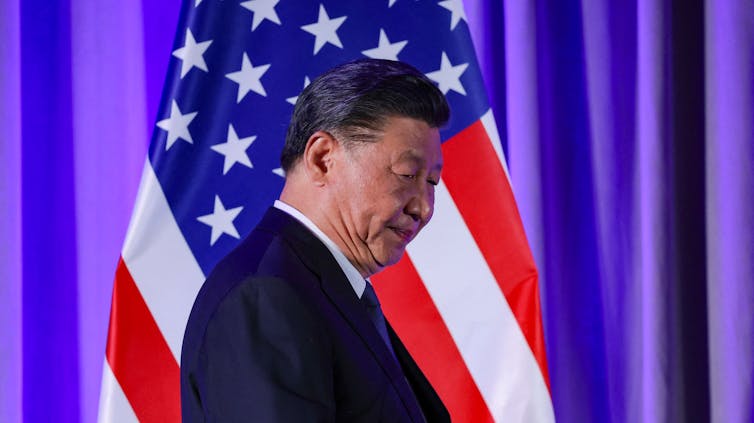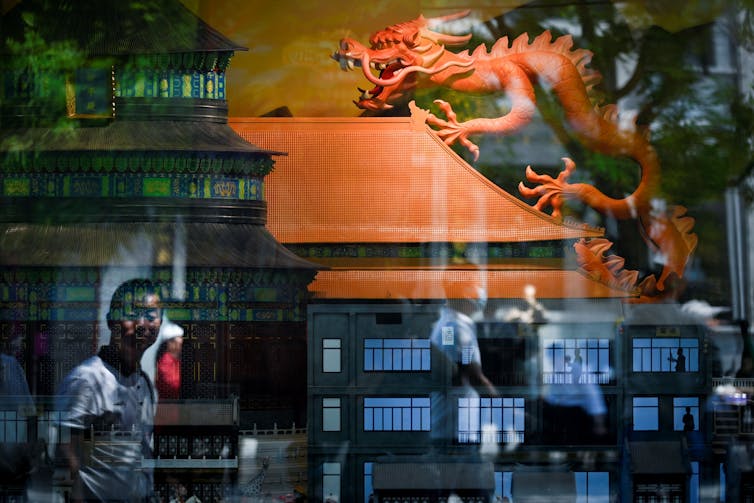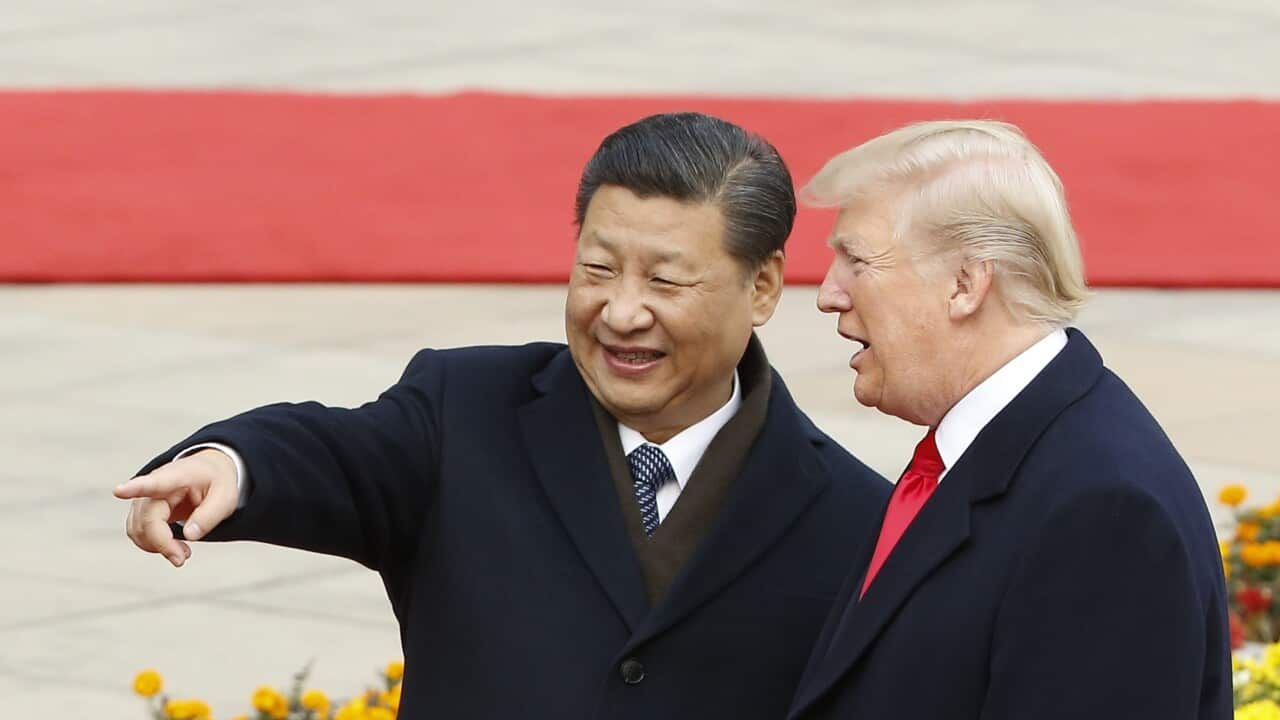When United States President Donald Trump pulled back on his plan to impose eye-watering tariffs on trading partners across the world, there was one key exception: China.
While the rest of the world would be given beyond the new 10 per cent tariffs on all US trade partners, China would feel the squeeze even more. On 9 April, Trump raised the tariff on Chinese goods to 125 per cent.
The move, in Trump's telling, was prompted by China's "lack of respect for global markets". But Trump may well have been smarting from China's apparent willingness to confront US tariffs head-on.
While many countries opted not to retaliate against Trump's now-delayed reciprocal tariff hikes, instead favouring negotiation and dialogue, China took a different tack. It responded with swift and firm countermeasures.
On 11 April, China dismissed Trump's moves as a "joke" and .
The two economies are now locked in an all-out, high-intensity trade standoff. And China is showing no signs of backing down.
And as an expert on US-China relations, I wouldn't expect China to. Unlike the first US-China trade war during Trump's initial term, when China eagerly sought to negotiate with the US, China now holds far more leverage.
Indeed, China believes it can inflict at least as much damage on the US as vice versa, while at the same time expanding its global position.
A changed calculus for China
There's no doubt that the consequences of tariffs are severe for China's export-oriented manufacturers — especially those in the coastal regions producing furniture, clothing, toys and home appliances for American consumers.
But since Trump first launched a tariff increase on China in 2018, a number of underlying economic factors have significantly shifted China's calculus.
Crucially, the importance of the US market to China's export-driven economy has declined significantly. In 2018, at the start of the first trade war, US-bound exports accounted for 19.8 per cent of China's total exports. In 2023, that figure had fallen to 12.8 per cent.
The tariffs may further prompt China to accelerate its "domestic demand expansion" strategy, unleashing the spending power of its consumers and strengthening its domestic economy.

Amid tariffs, China's President Xi Jinping senses a historic opportunity. Source: Getty / Carlos Barria
Perhaps counter intuitively, this prolonged downturn may have made the Chinese economy more resilient to shocks. It has pushed businesses and policymakers to factor in the existing harsh economic realities, even before the impact of Trump's tariffs.
Trump's tariff policy against China may also allow China a useful external scapegoat, allowing it to rally public sentiment and shift blame for the economic slowdown onto US aggression.
China also understands that the US cannot easily replace its dependency on Chinese goods, particularly through its supply chains. While direct US imports from China have decreased, many goods now imported from third countries still rely on Chinese-made components or raw materials.
By 2022, the US relied on China for 532 key product categories — nearly four times the level in 2000 — while China's reliance on US products was cut by half in the same period.
There's a related public opinion calculation: Rising tariffs are expected to drive up prices, something that could stir discontent among American consumers, particularly blue-collar voters. Indeed, China believes Trump's tariffs risk pushing the previously strong US economy toward a recession.
Potent tools for retaliation
Alongside the , China also holds a number of strategic tools for retaliation against the US.
It dominates the global rare earth supply chain — critical to military and high-tech industries — supplying roughly 72 per cent of US rare earth imports, by some estimates. On 4 March, China placed 15 American entities on its export control list, followed by another 12 on 9 April. Many were US defence contractors or high-tech firms reliant on rare earth elements for their products.
China also retains the ability to target key US agricultural export sectors such as poultry and soybeans — industries heavily dependent on Chinese demand and concentrated in Republican-leaning states. China accounts for about half of US soybean exports and nearly 10 per cent of American poultry exports. On 4 March, China revoked import approvals for three major US soybean exporters.
And on the tech side, many US companies — such as Apple and Tesla — remain deeply tied to Chinese manufacturing. Tariffs threaten to shrink their profit margins significantly, something China believes can be used as a source of leverage against the Trump administration. Already, China is reportedly planning to strike back through regulatory pressure on US companies operating in China.
Meanwhile, the fact that Elon Musk, a senior Trump insider who has clashed with US trade adviser Peter Navarro against tariffs, has major business interests in China is a particularly strong wedge that Beijing could yet exploit in an attempt to divide the Trump administration.
A strategic opening for China?
While China thinks it can weather Trump's sweeping tariffs on a bilateral basis, it also believes the US broadside against its own trading partners has created a generational strategic opportunity to displace American hegemony.
Close to home, this shift could significantly reshape the geopolitical landscape of East Asia. Already on 30 March — after Trump had first raised tariffs on Beijing — China, Japan, and South Korea hosted their first economic dialogue in five years and pledged to advance a trilateral free trade agreement.
The move was particularly remarkable given how carefully the US had worked to cultivate its Japanese and South Korean allies during the Biden administration as part of its strategy to counter Chinese regional influence. From China's perspective, Trump's actions offer an opportunity to directly erode US sway in the Indo-Pacific.

Could China's dragon economy slay Trump's tariffs? Source: Getty / Wang Zhao
Notably, all three Southeast Asian nations were targeted with now-paused reciprocal tariffs by the Trump administration — 49 per cent on Cambodian goods, 46 per cent on Vietnamese exports and 24 per cent on products from Malaysia.
Farther away from China lies an even more promising strategic opportunity. Trump's tariff strategy has already prompted China and officials from the European Union (EU) to contemplate strengthening their own previously strained trade ties, something that could weaken the transatlantic alliance that had sought to decouple from China.
On 8 April, the president of the European Commission held a call with China's premier, during which both sides jointly condemned and advocated for free and open trade.
Coincidentally, on 9 April, the day China raised tariffs on US goods to 84 per cent, the EU also announced its first wave of retaliatory measures — imposing a 25 per cent tariff on selected US imports worth over €20 billion ($36 billion) — but delayed implementation following Trump's 90-day pause.
LISTEN TO

Decoding the tariff war: Trump, Xi and the global fallout
SBS News
25:12
Now, EU and Chinese officials are holding talks over existing trade barriers and considering a full-fledged summit in China in July.
Finally, China views Trump's tariff policy as a potential weakening of the international standing of the US dollar. Widespread tariffs imposed on multiple countries have shaken investor confidence in the US economy, contributing to a decline in the dollar's value.
Traditionally, the dollar and US Treasury bonds have been viewed as haven assets, but recent market turmoil has cast doubt on that status. At the same time, steep tariffs have raised concerns about the health of the US economy and the sustainability of its debt, undermining trust in both the dollar and US Treasury bonds.
While Trump's tariffs will inevitably hurt parts of the Chinese economy, China appears to have far more cards to play this time around. It has the tools to inflict meaningful damage on US interests — and perhaps more importantly, Trump's all-out tariff war is providing China with a rare and unprecedented strategic opportunity.
Linggong Kong is a PhD candidate in political science at Auburn University.



